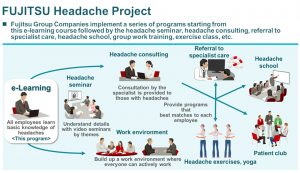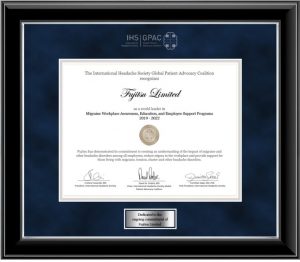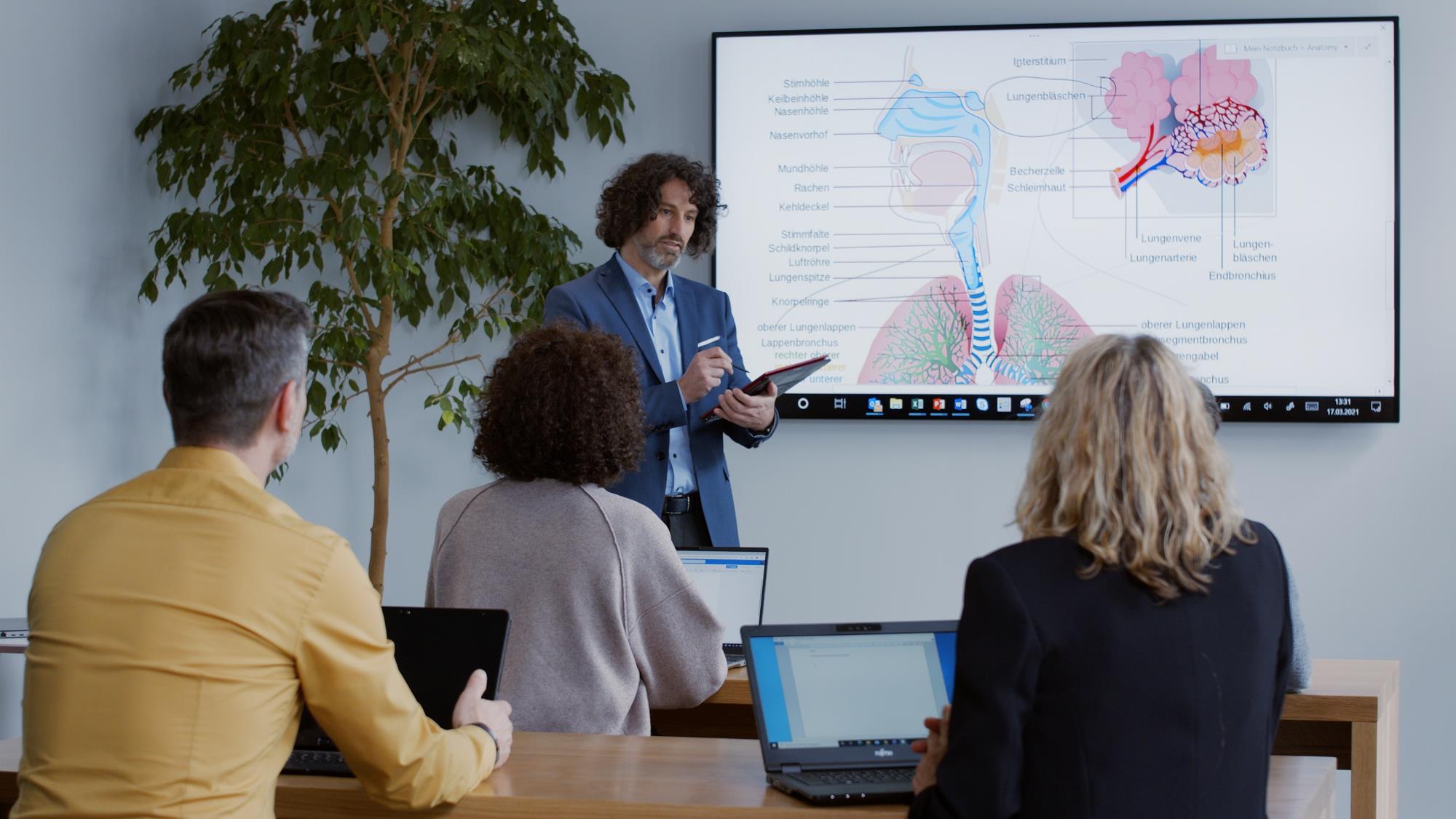Fujitsu today announced that it was the first company in the world to be honored by the Global Patient Advocacy Coalition of the International Headache Society(1)(IHS-GPAC) as a world leader in migraine workplace awareness, education, and employee support programs.
Chronic headache disorders, which include migraine, tension, and other chronic headache types, have a significant impact on daily life and work productivity. To address this problem, Fujitsu has developed and implemented training programs for employees globally in the workplace to promote awareness and treatment of headache disorders, as well as prevention programs for employees suffering from such disorders. Fujitsu’s efforts were evaluated by the International Headache Society as a model case of corporate measures to support employees living with headache disorders.
As a leader in migraine workplace awareness, education, and employee support programs, Fujitsu will further promote the dissemination of information related to health measures including headache countermeasures not only for employees, but also to their families, customers, and business partners. Fujitsu anticipates that these efforts will encourage greater understanding and continue to provide employees with advanced support for headache disorders and a variety of other related health issues.
 Background
Background
In the workplace, chronic headache disorders tend to be trivialized due to a common lack of understanding. As a result, many employees that suffer from these disorders continue to work while enduring painful headaches and other severe symptoms, leading to a decline in productivity and quality of life (QOL).
In June 2018, Fujitsu conducted an in-house survey among Fujitsu employees in cooperation with International Headache Society, the World Health Organization (WHO), and the Japan Headache Society. The survey was designed to evaluate the impacts of chronic headache disorders on their work. Of the 2,500 people surveyed, 85% had experienced headache disorders. Of those who experienced headache disorders, 84% had never been treated. In addition, it was found that the economic loss to Fujitsu due to headache disorder-related sick leave and lower performance was approx. 900 USD per year per chronic headache disorder-affected employee. The cost was even higher for those affected by migraine (approx. 2,300 USD). The total cost was approx. 197 million USD per year for all employees, representing approximately 1% of the total annual salary paid to all employees. It was also revealed that health related QOL scores(2) of employees with chronic headache disorders were lower than the national standard for Japan. This demonstrates that headache disorders have a significant impact on daily life and work productivity. To address this issue, Fujitsu launched the “FUJITSU Headache Project” as a headache disorder prevention program that is now globally available to all employees.
Outline of the “FUJITSU Headache Project”
Based on the results of a joint study conducted in 2018 (Fujitsu employee survey on the degree of impact of chronic headache disorders on work), Fujitsu in fiscal year 2019 developed the FUJITSU Headache Project in cooperation with IHS-GPAC and the Japanese Headache Society. Utilizing e-Learning programs to help Fujitsu Group employees in Japan acquire correct knowledge about headache disorders, Fujitsu held video seminars for headache patients, online headache consultations with specialists, and headache exercises. Through these initiatives to help employees with headache disorders, Fujitsu attempts to improve QOL and boost work productivity, and aims to create a workplace where people suffering from headache disorders can work comfortably and with peace of mind.
1. Project period: July 2019 to February 2022
2. Target: Approximately 70,000 Fujitsu Group employees in Japan
3. Content: e-Learning programs and on-demand video seminars, online headache consultations, etc.




